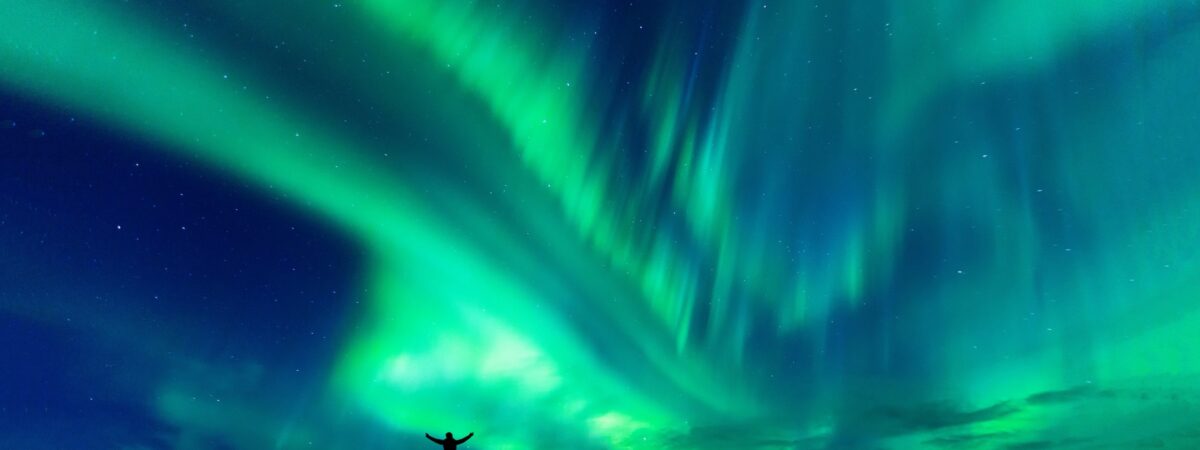
Over the past few days, Ireland has witnessed a small atmospheric miracle: aurora borealis visible to the naked eye, sometimes even from cities, a phenomenon rare enough to be celebrated by astronomers and travelers alike. The cause? Huge solar storms sent a flood of charged particles towards our planet, creating electric-green or pastel-pink veils of light in the Irish sky. For a country already renowned for its magic, seeing its nights light up in this way adds an extra, almost supernatural layer of fascination.
This week, the Northern Lights are likely to be seen mainly in the north of the island, where Irish skies remain the darkest and least polluted by urban lights. Geomagnetic forecasts predict a particularly high level of activity, strong enough for the veils of light to extend down to below the latitude of Donegal. So it’s in this county that travelers will have the best observing prospects.
Donegal, already famous for its raw nature and ocean panoramas, is transformed into a veritable celestial balcony. Places like Malin Head, Ireland’s most northerly point, offer an unobstructed horizon perfect for watching the sky move. The Inishowen Peninsula, meanwhile, is considered one of the best sites in the country for observing light phenomena from the North Pole.
The Mayo, on the northwest coast, also falls into the favorable zone. The Mullet Peninsula, the area around Belmullet and Achill Island can offer some real nocturnal tableaux, especially when the clouds retreat and give way to clear skies. This region, already renowned for its dark sky parks, becomes an ideal playground for photographers in search of long exposures.
Even if the southern and eastern regions are less likely to see the phenomenon, it’s not impossible that a few glimmers could sneak up on Wicklow or the Dublin coast if solar activity exceeds forecasts. However, it’s the north that’s the focus of hope: the further north you look, the greater the probability.
To maximize your chances, it’s best to stay away from urban centers, preferring coastal areas or slightly higher altitudes. Clear skies, good weather and a little patience will do the rest. When the auroras do appear, they sometimes appear without warning: a green curtain unfurls, a pink sheet ripples, then all disappears before reappearing a little further on. An ephemeral spectacle, but one of rare intensity.
Ireland is at a moderate latitude for regular Northern Lights viewing. Travellers usually come across these celestial dances in Iceland, Lapland or Canada. But when the Sun enters a phase of intense activity, it releases eruptions capable of extending the aurora to our latitudes. Scientists keep a close eye on this activity, as it can disrupt communications and power grids, but it also provides Ireland with enchanting nights.
This week’s special feature was the intensity of the solar storms, which was well above average. The Kp index, which measures geomagnetic activity, sometimes reached rarely observed levels, opening a unique window to observe these luminous veils even from the south of the country.
When Ireland’s skies are bathed in northern lights, the whole island is transformed into a natural observatory. A few places in particular stand out for their low light pollution and clear horizons.
Donegal remains a must-see, especially Malin Head, the country’s most northerly point. The Mayo headlands also offer spectacular scenery, notably Achill Island, where the cliffs plunge into the Atlantic.
Further south, the Dingle Peninsula is a regular surprise. When geomagnetic activity is strong enough, its black skies become the perfect backdrop for these draperies of light. Even Wicklow, close to Dublin, has recently offered a few celestial tableaux that have charmed photographers and nocturnal onlookers alike.
You might think that contemplating an aurora is a matter of pure luck. In fact, there are a few tricks you can use to increase your chances of being in the right place at the right time.
The first is to keep an eye on the Irish weather, which is as fickle as ever. Clear skies, even partial ones, can be enough. Secondly, it’s essential to stay away from towns and their lights: a simple street lamp can dull visibility.
The second trick is technological: several specialized websites and mobile applications provide real-time alerts on geomagnetic activity. When the index climbs, especially above Kp6, hope becomes real.
Patience is also recommended. Auroras are not a continuous spectacle. They appear, disappear and suddenly return. A thermos of hot tea, a good jacket, a little determination… and the magic does the rest.